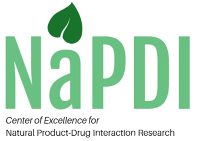Both in vitro and molecular modeling studies have identified the enzyme cytochrome P450 (CYP) 2A6 as the target of the active component of cinnamon, the phenylpropanoid cinnamaldehyde. Specifically, cinnamaldehyde inhibits CYP2A6 activity. Using recombinant CYPs and human liver microsomes, cinnamaldehyde was shown to inhibit CYP2A6 in a time- and metabolism-dependent manner. Two clinically relevant substrates of CYP2A6 include nicotine and letrozole, medications used for tobacco cessation and breast cancer, respectively. Inhibition kinetic and other parameters for cinnamaldehyde were applied to an established mechanistic static model to predict the change in area under the plasma concentration vs time curve (AUC) of each drug. An increase in AUC of 4-to 5-fold was predicted for both nicotine and letrozole, exceeding the FDA recommended cutoff (1.25). Based on these compelling observations, the NaPDI Center designed further in vitro and clinical studies to evaluate a well-characterized, commercially available cinnamon dietary supplement as a precipitant of pharmacokinetic interactions with CYP2A6 substrates.
